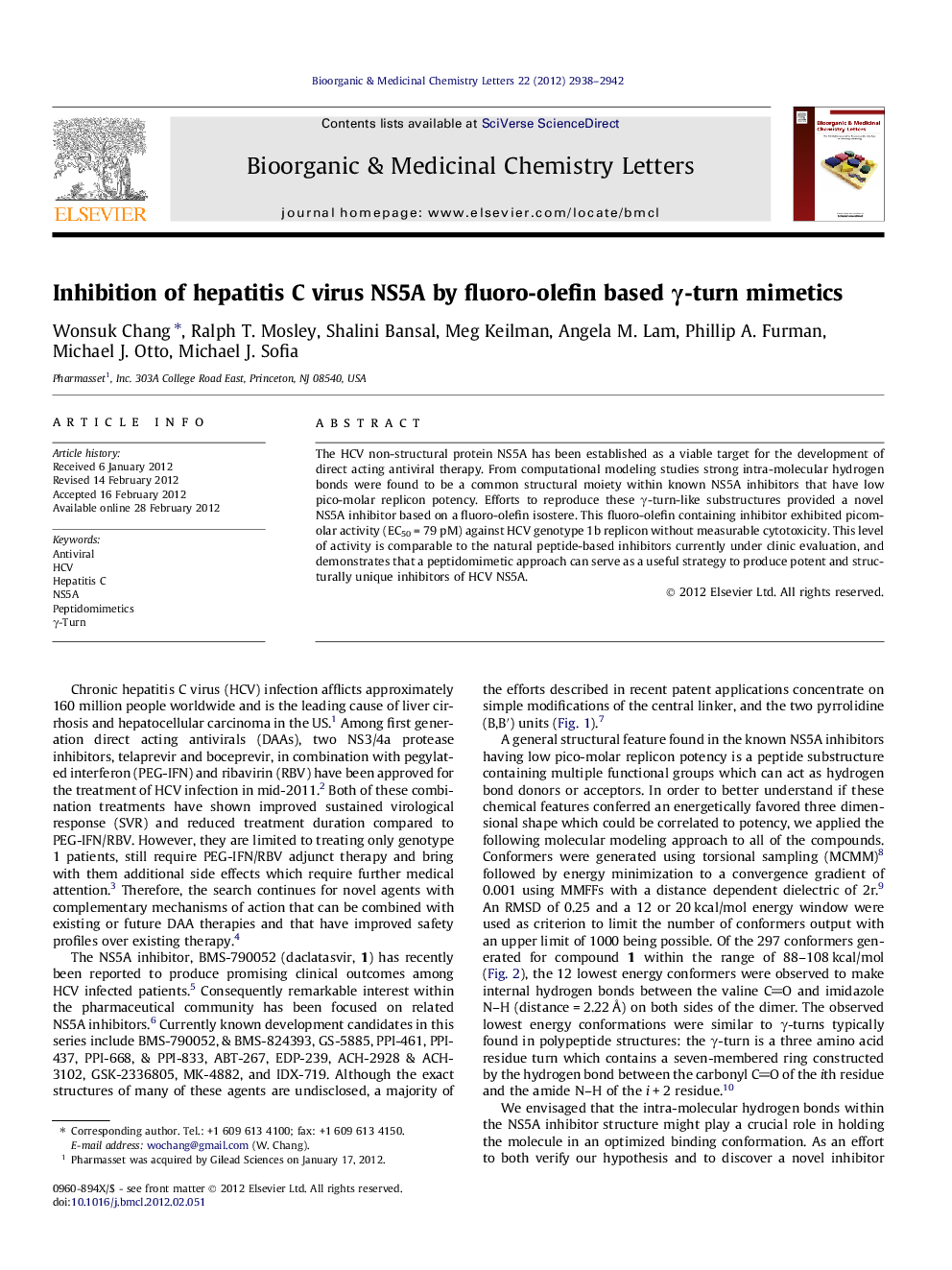| Article ID | Journal | Published Year | Pages | File Type |
|---|---|---|---|---|
| 1361306 | Bioorganic & Medicinal Chemistry Letters | 2012 | 5 Pages |
The HCV non-structural protein NS5A has been established as a viable target for the development of direct acting antiviral therapy. From computational modeling studies strong intra-molecular hydrogen bonds were found to be a common structural moiety within known NS5A inhibitors that have low pico-molar replicon potency. Efforts to reproduce these γ-turn-like substructures provided a novel NS5A inhibitor based on a fluoro-olefin isostere. This fluoro-olefin containing inhibitor exhibited picomolar activity (EC50 = 79 pM) against HCV genotype 1b replicon without measurable cytotoxicity. This level of activity is comparable to the natural peptide-based inhibitors currently under clinic evaluation, and demonstrates that a peptidomimetic approach can serve as a useful strategy to produce potent and structurally unique inhibitors of HCV NS5A.
Graphical abstractFluoro-olefin 2 was designed to mimic intramolecular hydrogen bonds in NS5A inhibitors and demonstrated pico-molar anti-HCV activity in vitro.Figure optionsDownload full-size imageDownload as PowerPoint slide
